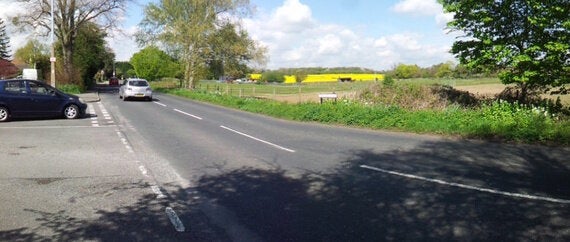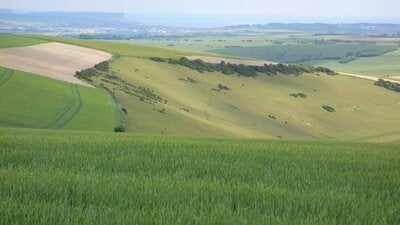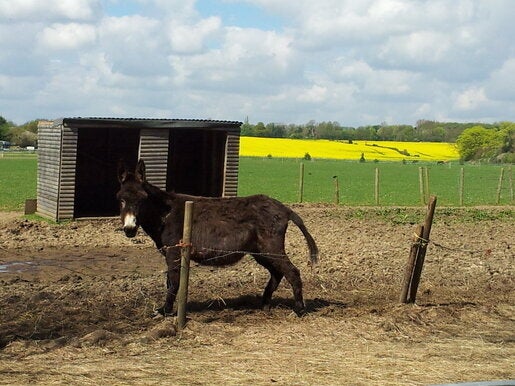In 1934 a Gloucestershire boy strode out to London, 'nineteen years old, still soft at the edges, but with a confident belief in good fortune.' Laurie Lee, who would have turned 100 this week, described this epic journey - which eventually saw him trekking the length of Spain - in 1969's As I Walked Out One Midsummer Morning.

Laurie Lee on the road in 1934 (Image courtesy of the Laurie Lee Estate)
I discovered his lush, sense-exploding prose in my teens, when I too longed to escape the cosseting boundaries of home. Reading his portrait of rural childhood, Cider with Rosie, was like rolling in pollen: shrouded in sticky verbal petals you found yourself up close to deliciously minute details, your mind suddenly free and fertile; open to its own imaginings.
I grew up not in a cut-off Cotswold valley 'where the summer vegetation grows with all the matted fierceness of the Burmese jungle', but just past London's north-west lip, in the '80s and '90s. The Metropolitan Green Belt, though buckled and pierced by roaring motorways and A roads, still held fragments of a pastoral, pre-metropolitan age. We picked dripping armfuls of strawberries at Blackbirds Farm; heard the slow, approaching chime of the Radlett rag and bone man; and, on the traffic-laden crawl up Elstree Hill to school, watched morning-eyed ponies nuzzling the stiles.

The Green Belt: fragments of a pastoral age (Image Colette Bernhardt)
More and more, I was drawn to big, unpeopled spaces. The farmland behind our house - swaying with wheat one year, electric yellow with rape the next - was good for roaming, or sitting thinking for hours on the riverbank (where I was once mistaken for a corpse). When exams loomed, or I felt especially disenchanted with life, I considered tearing off into those fields, and, like Lee, just walking and walking... If I kept going surely I'd reach no-man's-land, far from bewildering humanity?
Then, at exactly the age Lee left home, I moved out, to Brighton. Here, amongst artists, gays and hippies, I finally found people who 'got' me, and I them. I also found a vast, intoxicating terrain that offered genuinely unending walks, and an escape from everyone and everything: the South Downs. Against its swooping, desolate hills and wooded heaths, my birthplace seemed flat; polluted; full of pylons, and was largely forgotten.

The South Downs: a vast, intoxicating terrain (Image Colette Bernhardt)
Over 15 years I tramped further and deeper into the mythical places around me: Mount Caburn, bulging with Iron-Age burial pits; Kingley Vale, with its vast, wizened yew trees; and Lullington Heath, where rare orchids and wild goats emerged in the grasses if you waited long and quietly enough.
But last year, without warning, the unthinkable happened. I was struck down with chronic fatigue syndrome, and within months could barely make it down my street. Once a healthy, striding 34-year-old, now I had the vigour of a withering crone. So I returned to South Hertfordshire and my parents - now in a bungalow outside St Albans - in early spring, my only landscape the curve of faded, childhood pillows and the countours of the old embossed wallpaper.
Confounded by this poorly understood illness, my nervous system firing messages out like bombs, I became mollusc-like, doing less and less each day. But human bodies are built for movement, and inactivity only made mine frailer and more befuddled. By this time last year it was exhausting and painful to speak, write or hold a book - Mum read me bursts of Lee's A Rose for Winter - and my daily two-minute walks had dwindled to a handful of seconds.
In the brief spaces between my lie-downs, my loving but helpless parents arranged cushioned seats in the garden, alight with summer blooms. But I no longer belonged to the outside world; I lived in a dark, foreboding place that increasingly seemed, as Lee once wrote of his epilepsy, 'a tiny rehearsal for death'.

My only landscape: childhood pillows and embossed wallpaper (Image Colette Bernhardt)
More than anything - work, social contact, my now relinquished flat - I yearned for the simple act, never before questioned, of leaving the house to go somewhere else. Those downland strolls; each chalk-stubbed path, each spike of yellow gorse still acid sharp in my mind, took on a totemic poignancy. People talked of recovery, yet it showed no signs of happening, and it seemed entirely possible that I might never walk anywhere again. I began to wonder if it was worth staying alive.
But then help arrived: a specialist NHS physio and occupational therapist showed me how to build my strength in tiny increments. After a few weeks I could hobble to the end of the garden: about 15 metres. Two weeks later I made the bottom of the road. They were small yet significant steps, and I soon saw that it was walking, easy to measure and crucial to the entire ministration of the body, that would bring me back to life.
Making the increases was a fraught process; my body was fragile, my symptoms fluctuated greatly, and the fear of worsening always loomed. Yet as I walked further, other faculties fell into place: I no longer talked in a whisper, I could hold a pen for more than a paragraph, I could sit up for more than an hour. And I was edging closer to the old me, reaping dusty apples by the Park Street roadside, or trampling November leaves in a Shenley meadow.

Trampling November leaves in Shenley (Image Colette Bernhardt)
Still, I remained fettered by sadness. I might not be housebound, but escape from my suburban surrounds depended on other people's lifts, and my time-limited walks on the tinny bleeps of a digital watch. Once, through the car window, I spied a mud-drenched horse - head down, back bent, still as a chess piece - and saw all the grief of existence in its sunken haunches.
And then, at the end of March, I made the 30-minute mark - a milestone, literally - and things started to change. I could reach - and walk a smidgeon of - the field-skirting footpath to Park Street station, where a bay mare and her foal rolled in the sun. I sniffed daffodils and distant fires, rape seed just beginning to pepper the air. I remembered, after 15 eternal months, how a decent-length ramble clears the mess out of your head, problems falling away like petals.

Managing a 30-minute walk - finally (Image Colette Bernhardt)
Now I'm chalking up three miles a day, and, like a long-wintering fern, life is unfurling back out. I'm still far from 'recovered', but can make out visible landmarks in the distance, some of them startlingly beautiful. And I'm exploring a new territory, the one where I was born, but did not stay long enough to really know.
While my Sussex treks comprised odd day-trips when workloads were low and weather was fine, now I walk daily, as folk did in Lee's day, becoming entwined with the landscape through necessity. More than ever before, walking is a compulsion, and this summer I intend, slowly but surely, to get further and further, till I forget 'everything but the road ahead' and my body moves 'steadily, effortlessly, hour after hour, in a kind of swinging, weightless dream.'
Finally, I have the chance to see what lies in all those fields I once dreamed of escaping to. I will stride out right from my door, here in Hertfordshire, watched by red kites, shadowy newts and morning-eyed ponies.